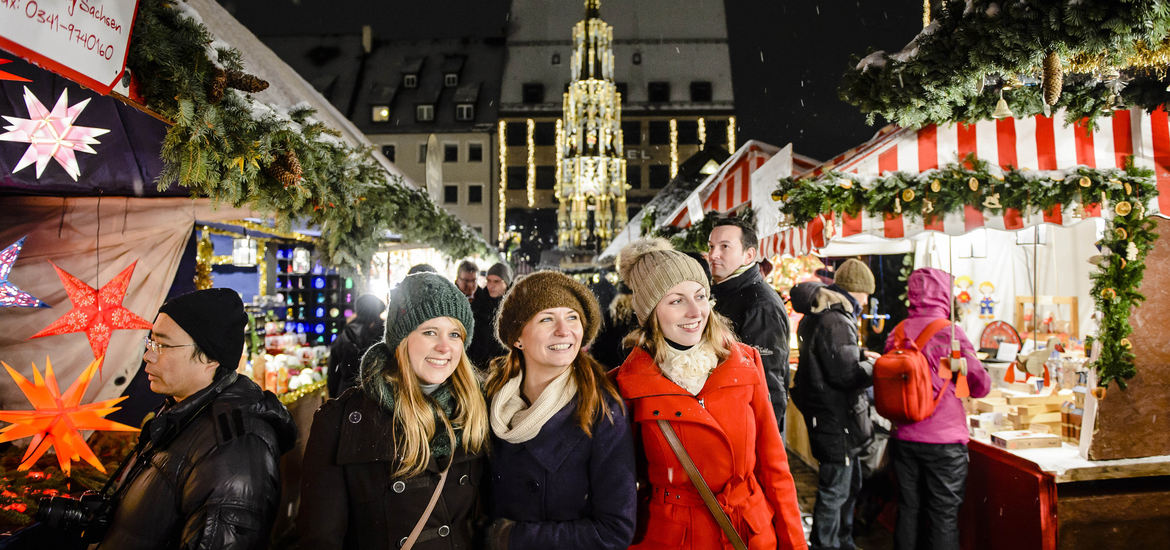How the “Kindles-Marck” became the Nuremberg Christkindlesmarkt
It is assumed that the origin of the Nuremberg Christkindlesmarkt goes back to the traditional fairs of the late Middle Ages. The oldest written evidence of the market is found on an oval bentwood box, which was offered for sale at the “Kindles-Marck” of 1628 and is today part of the collection of the Germanisches Nationalmuseum. The Nuremberg Christmas Market quickly became a favorite of both shoppers and traders. The original three-day event was expanded to three weeks. Between St. Barbara’s Day on December 4th and Christmas Eve, there was a buzz of activity around the Main Market Square. Naturally, all the traditional Nuremberg craftsmen – such as gingerbread bakers, book binders, doll makers and wood carvers – were represented, offering their lovingly finished wares. It was the “Rotschmiede” – metal smiths working in brass – that especially shaped the character of the Nuremberg Christkindlesmarkt. The wings and robe of the famous Rauschgold angels were created from their finely beaten brass.
In the 19th century, the Christkindlesmarkt developed into a tourist attraction that drew visitors from near and far. The local toy industry took advantage of the leading role of the Nuremberg Christmas Market to promote their products. Between 1898 and 1933, the market was forced to change locations several times in order to accommodate growing street traffic. After the so-called seizure of power, the National Socialists moved the “German” market back to the Main Market Square to give it more prestige. In 1948, when the market was re-opened after the war, many of the elements used in the 1930s – chains of lights, garlands of fresh pine boughs, festive decorations in the streets and the ceremony with a living Christkind, who recites a prologue from the balcony of the Church of Our Lady – remained virtually unchanged, with one very important difference. Today, the Nuremberg Christkind would never recite political slogans, but instead welcomes guests of all kinds from all over the world.
